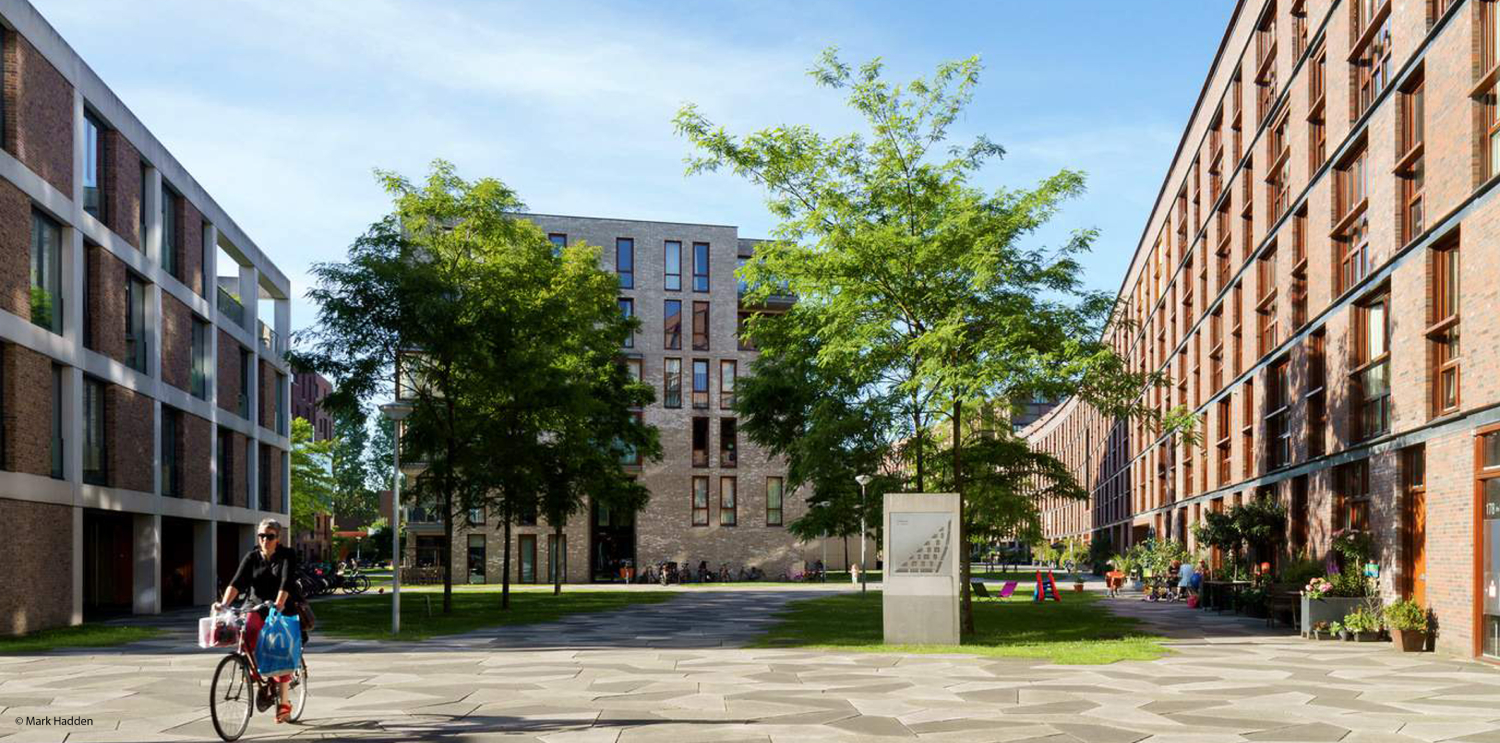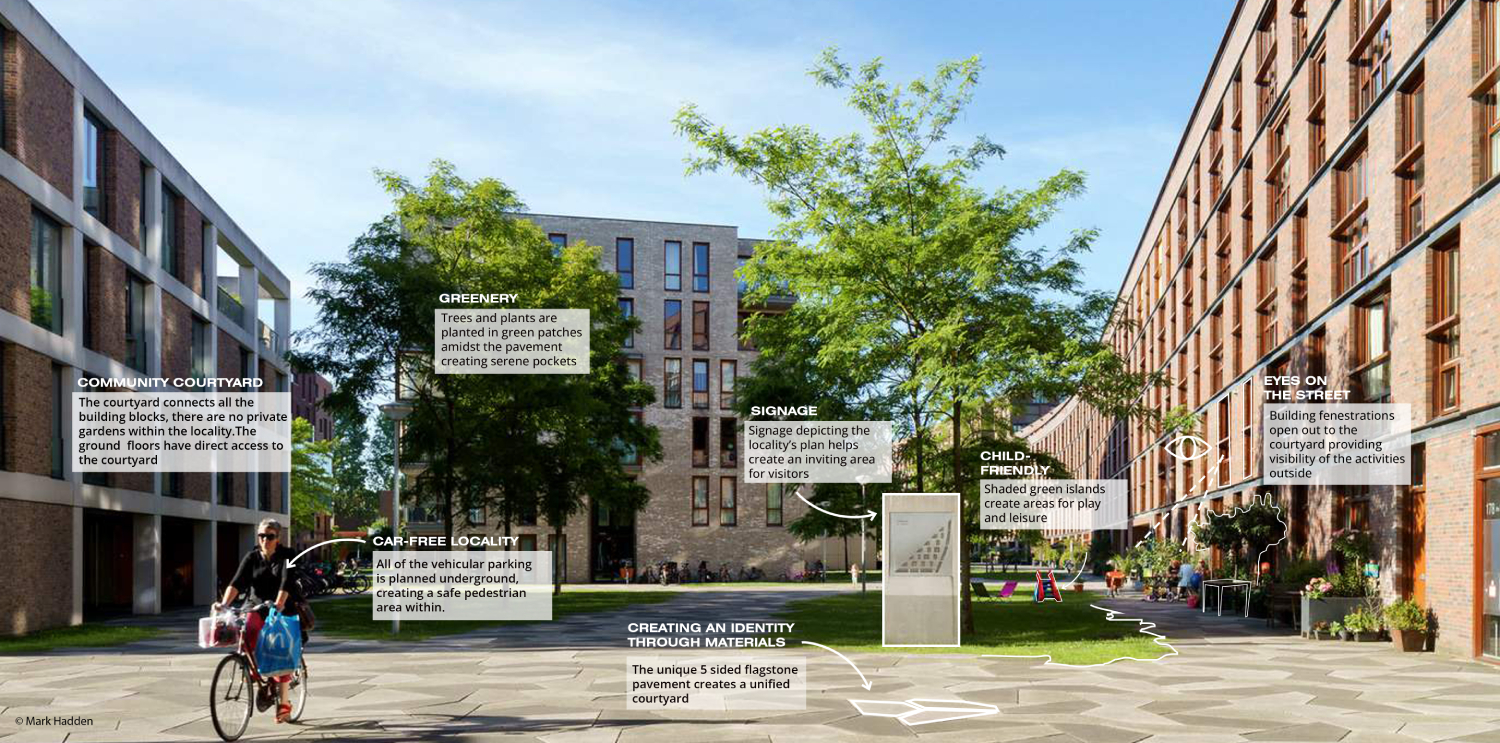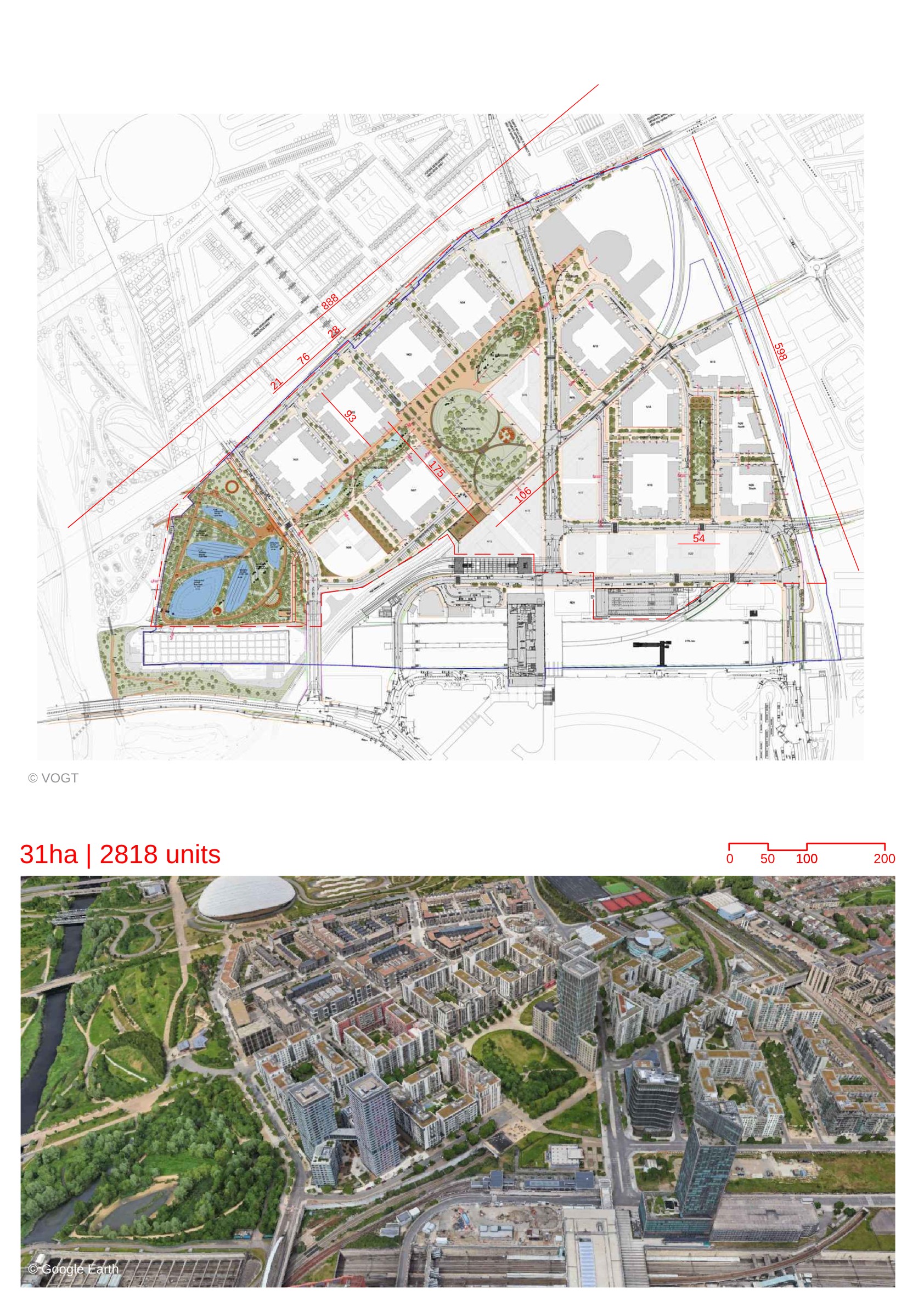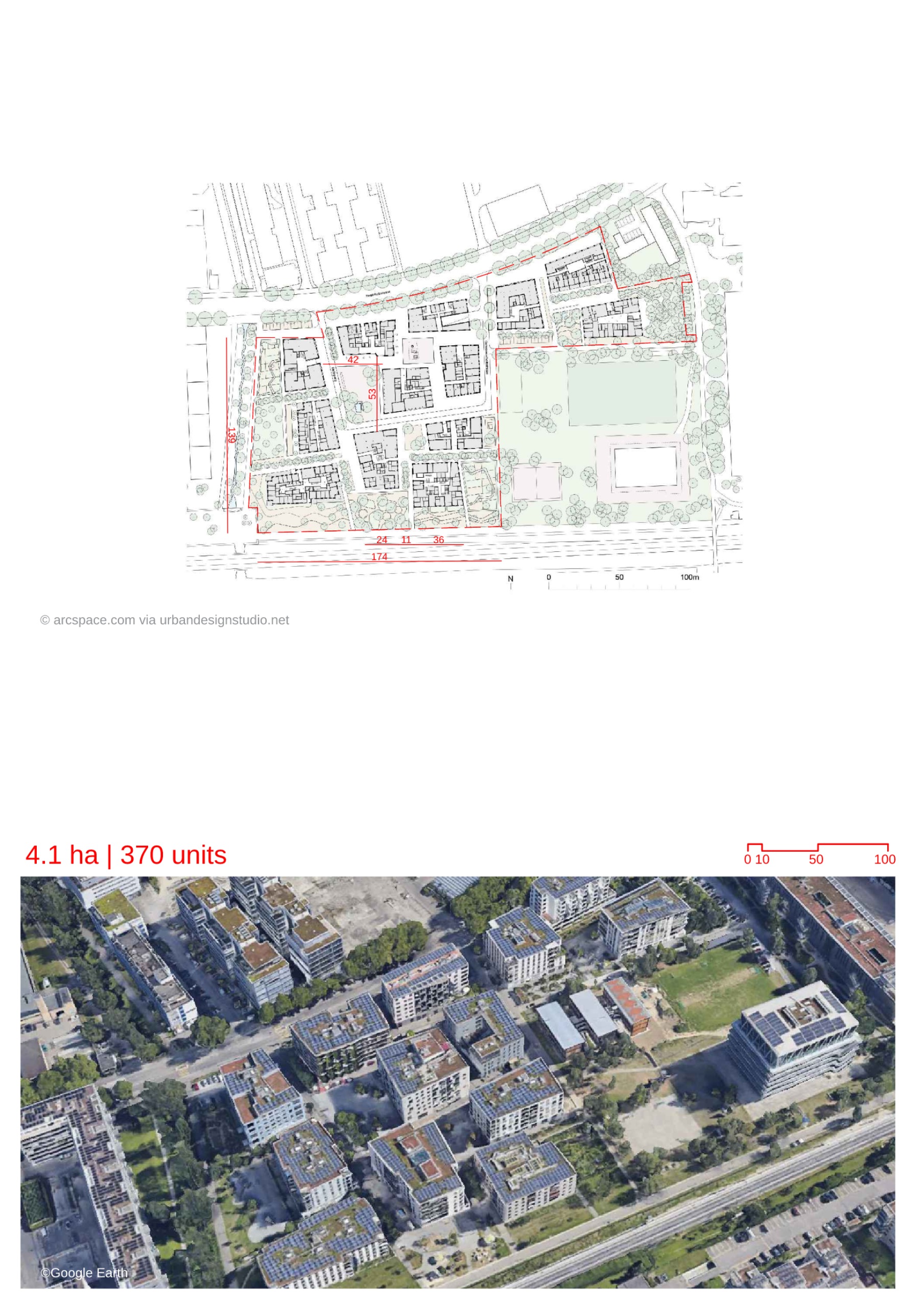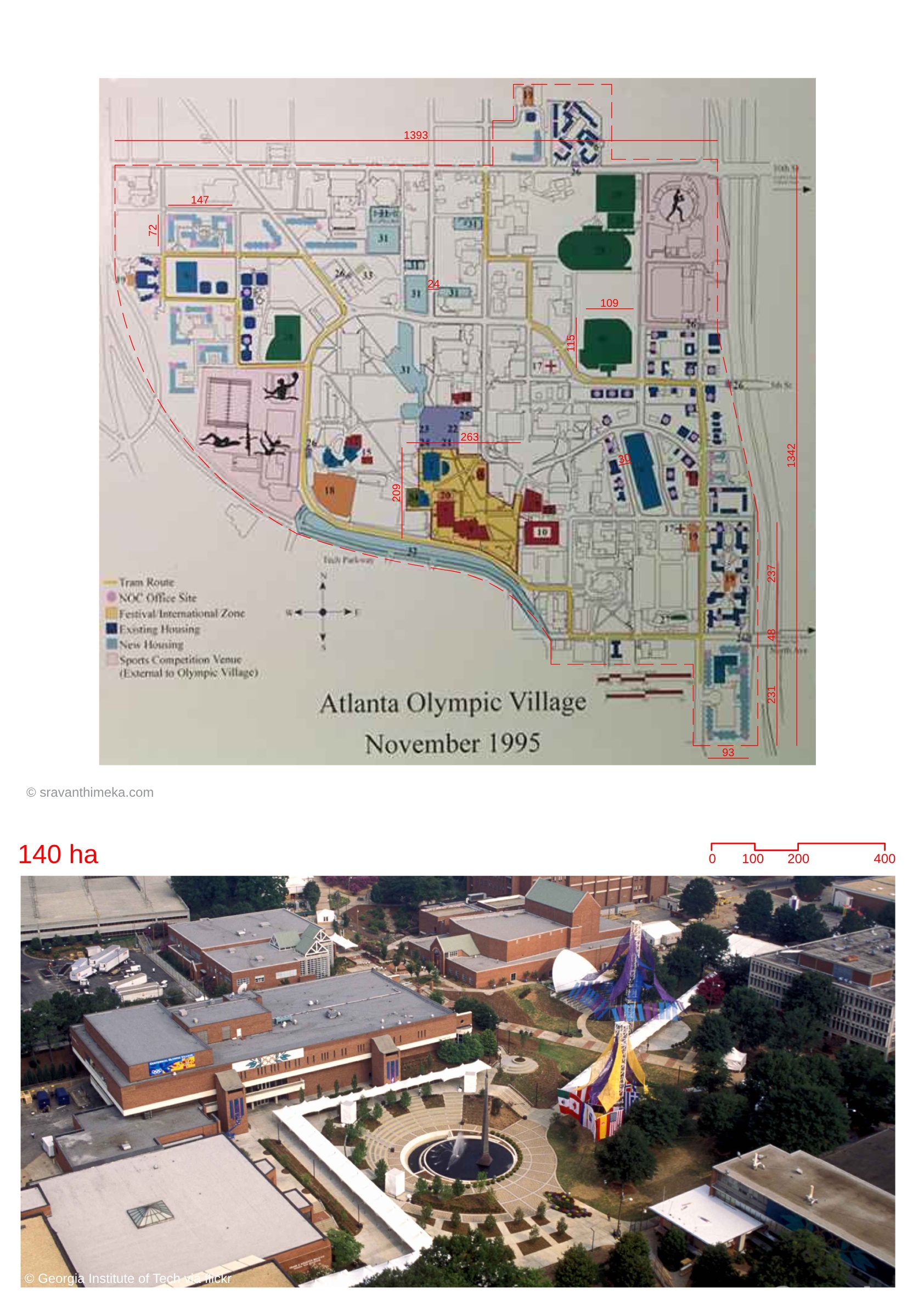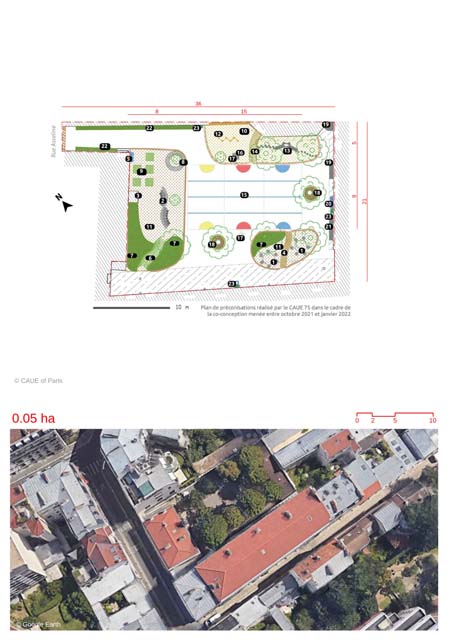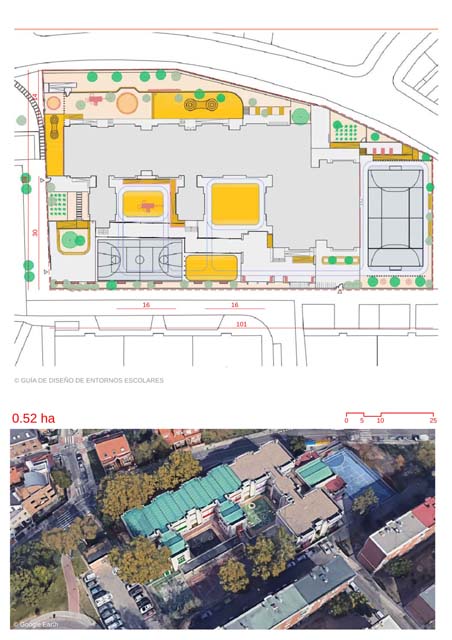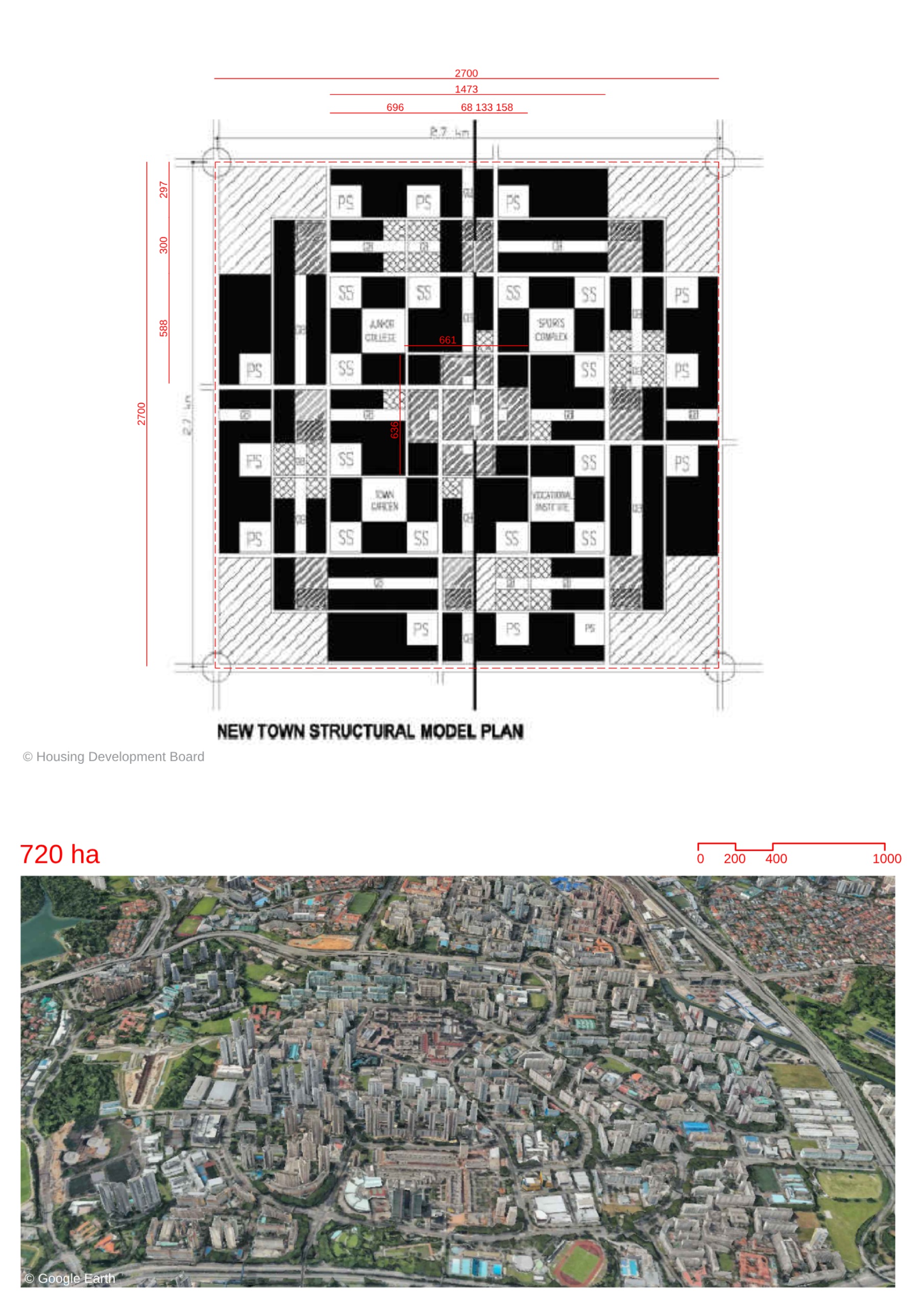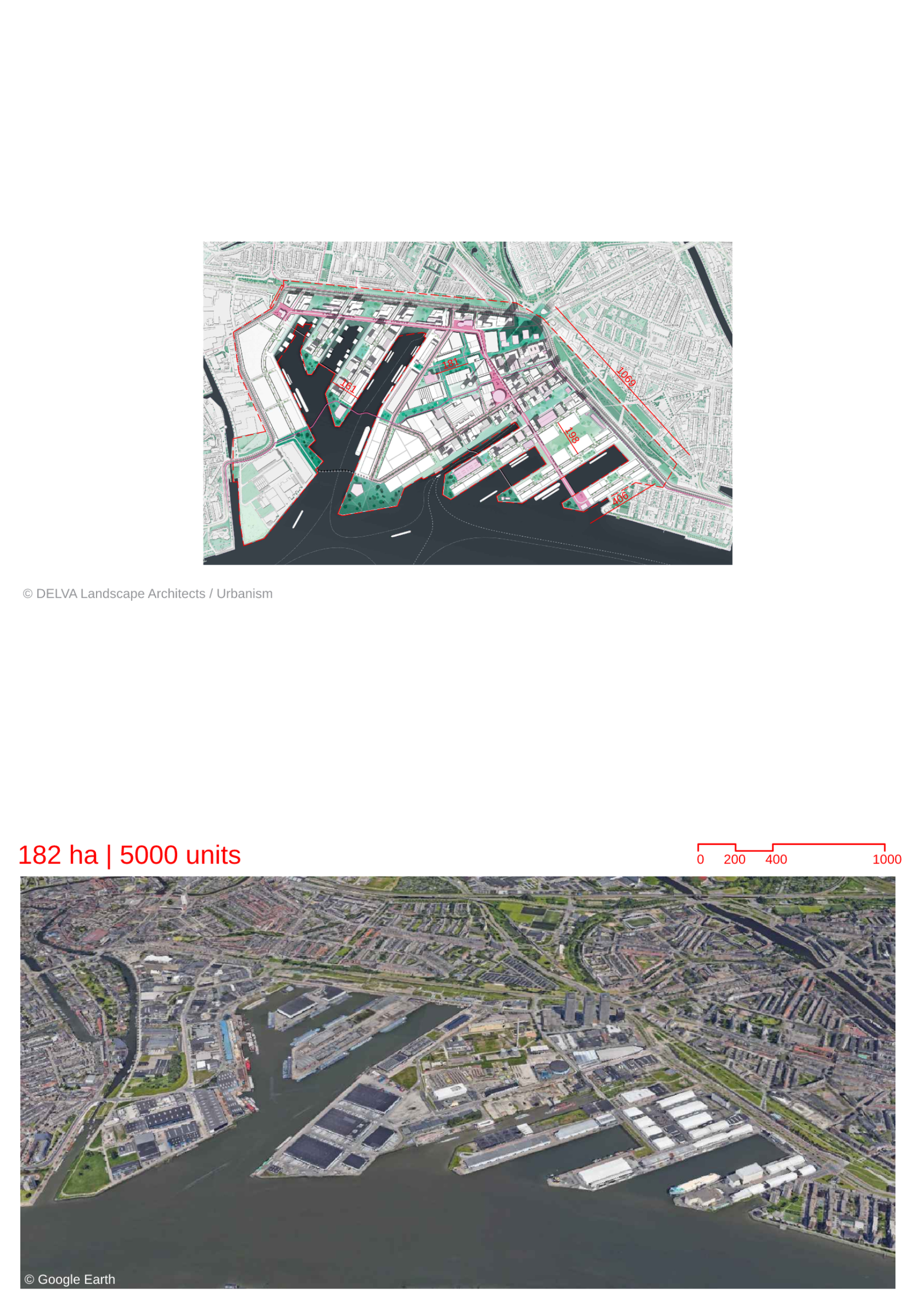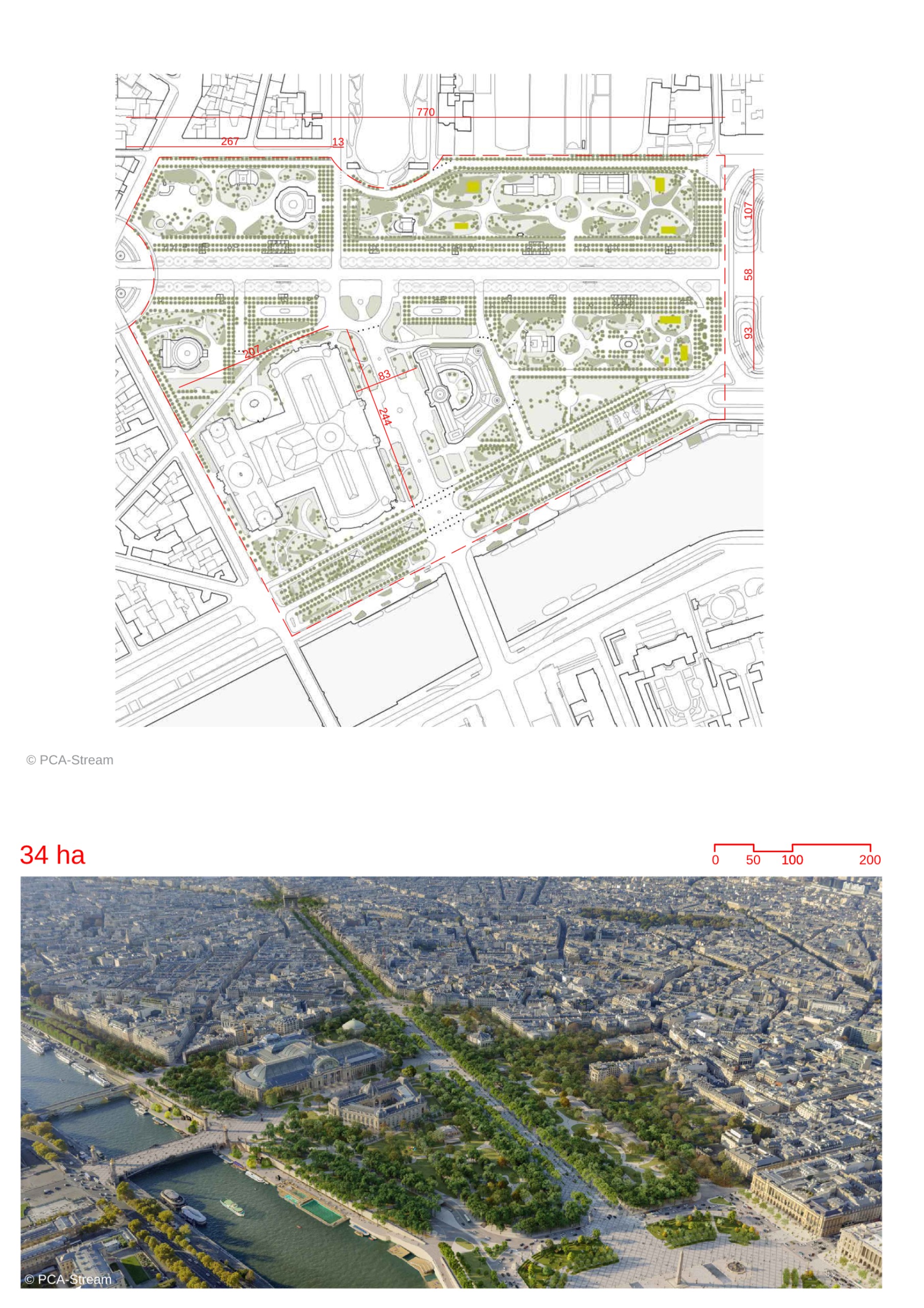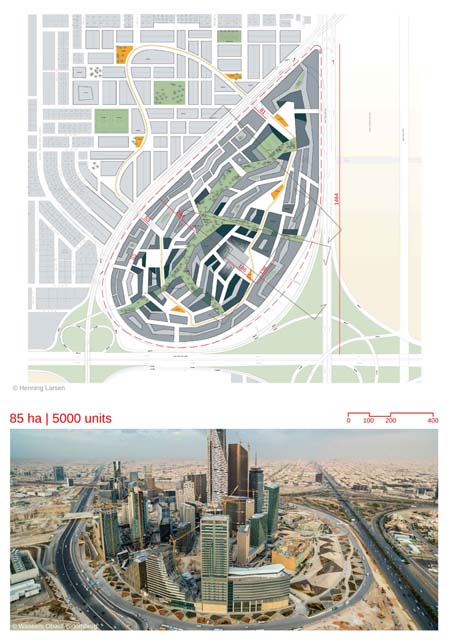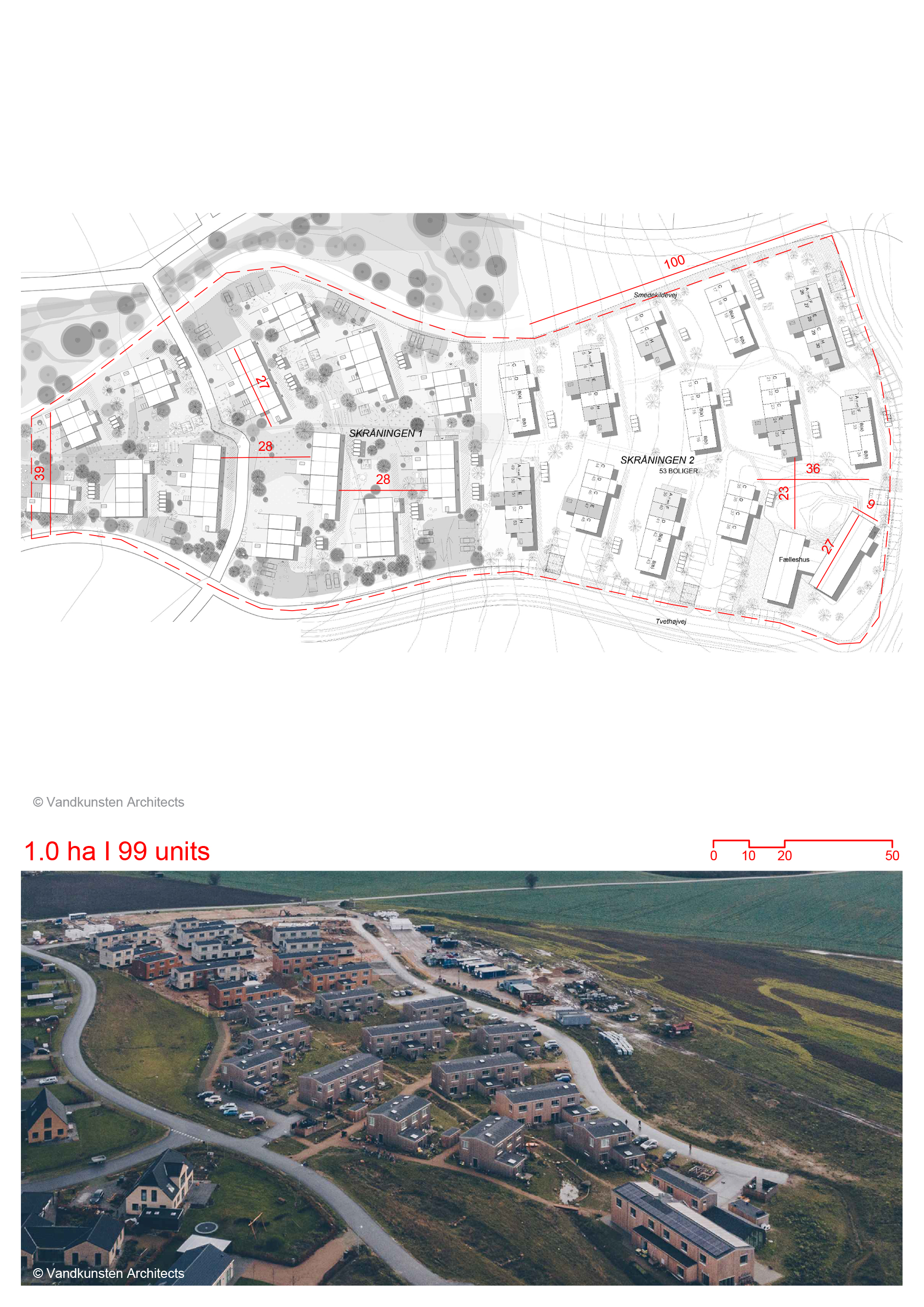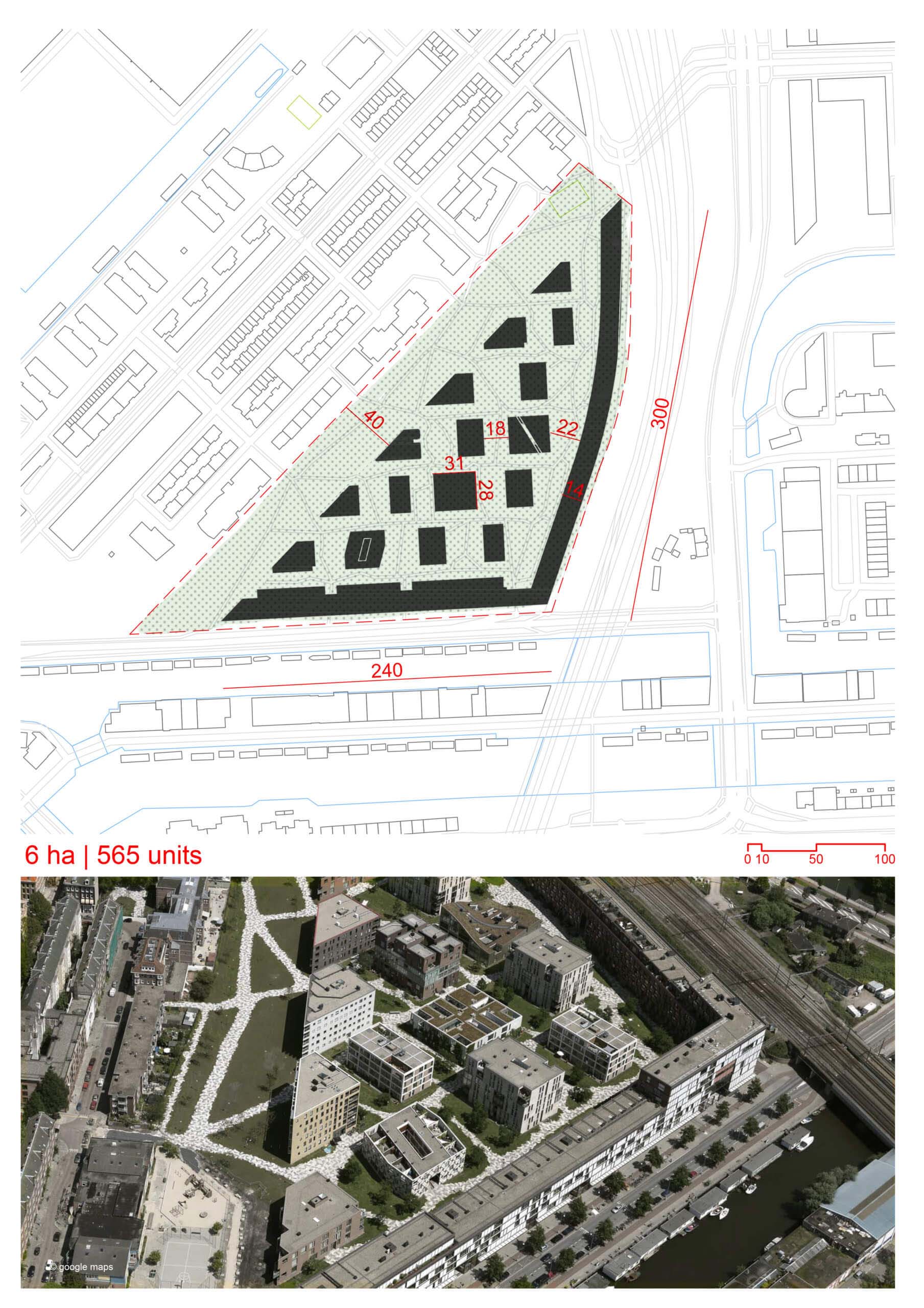
Details
Views:
1036
Tags
Data Info
Author
DE ARCHITEKTENCIE
City
Amsterdam
Country
The Netherlands
Year
2005
Program
Residential development
Technical Info
Site area
60000 sqm
Gfa
0
sqm
Density
0 far
Population density
1200
inh/ha
Home Units:
565
Jobs
0
Streetsroad:
0
%
Buildup:
0
%
NonBuild-up:
0 %
Residential
0 %
Business
0
%
Commercial
0
%
Civic
0
%
Description
- The triangular site is bordered by:
- Existing neighborhood on one side.
- Nieuwevaart canal along the south side.
- Curving elevated railroad tracks on the east side.
- The design combines principles from perimeter block and garden city typologies.
- The south and east sides are lined with “ell”-shaped brick slabs, enclosing an interior park area.
- A discontinuous grid of 16 free-standing urban villas is aligned with Cruquiustraat.
- Cars are parked in the basement of the perimeter slab, leaving the landscaped interior entirely for pedestrians.
- A wider swath of park is left between the existing buildings on the west side and the edge of the urban villas.
- The site is expressed as four distinct components:
- Funenpark: A shared public open space along the west side.
- Het Funen: The zone of urban villas.
- Sporenboog: The slab curving along the east edge.
- Cruquiustkade: The slab facing the canal along the south side.
- De Architekten Cie designed the two perimeter slabs, while 9 other architects designed the urban villas.
- The villas follow a fixed grid, but vary in design, materials, and height, ranging from 10 to 24 dwellings each.
- The design references a rational order but follows the model of free-standing elements in a garden setting.
- All villas are entered from the public garden space, with ground-floor dwellings enabled by the strategy of parking cars under the perimeter block.
- A continuous landscape mat between the buildings features a zig-zag pattern of paved walkways that define odd-shaped planters and lawns.
- The roofs are terraced, with 50% of the roof space used, creating sculptural objects in the landscape when viewed from upper levels.
Site Context
Master Planning Concept
Building Components
Architecture and Design
Landscape and Pedestrian Space
Location
Deep Dive
Explore a dynamic and data-rich visualization of this masterplan through an embedded Aino.World interactive map. This feature provides a detailed spatial representation of the development, with color-coded information layers highlighting: Buildings – categorized by function and usage ; Green Areas – parks, public spaces, and ecological zones; Points of Interest (POI) – key landmarks, amenities, and services This map allows users to navigate through the masterplan intuitively, gaining insights into the urban fabric, land use distribution, and connectivity of the area. Dive into the details and analyze how different elements interact within the cityscape.
Streetscapes
Explore the streetscapes related to this project
|
Sources
Explore more Masterplans
|
